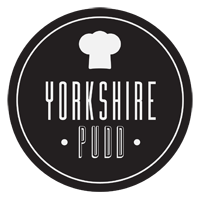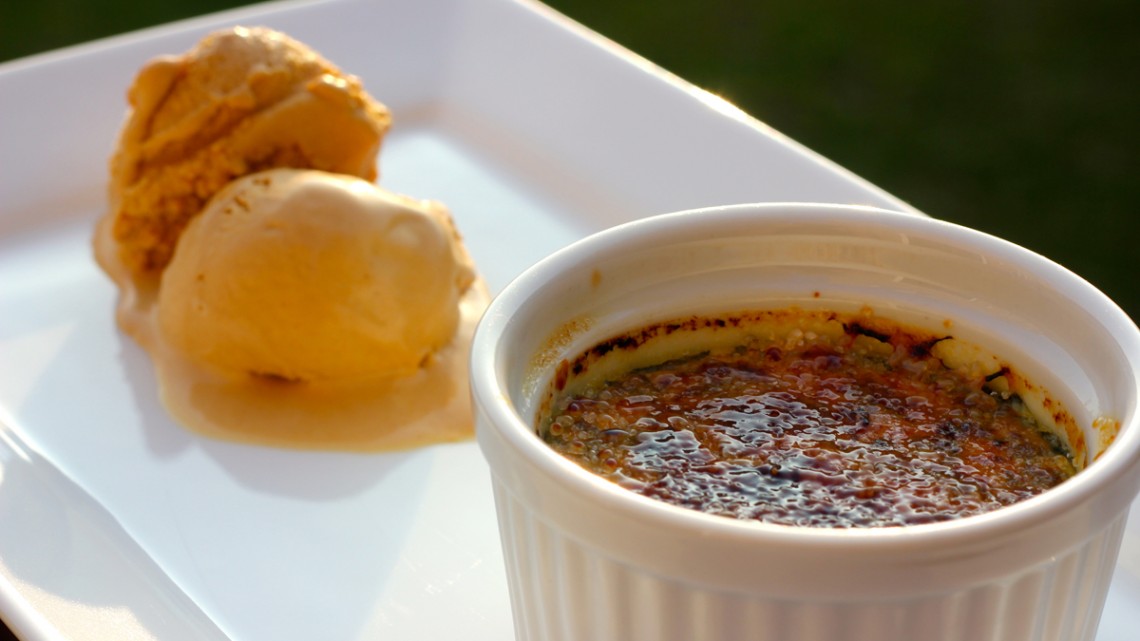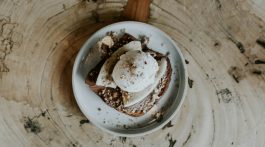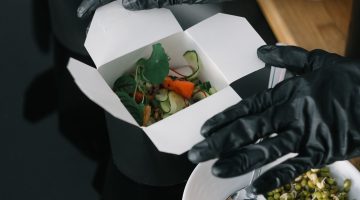Around the Counties in 47 Blog Posts – Cambridgeshire
Everyone loves a good debate, and debate certainly rumbles on about the origins of this most famous of desserts. It even has more than one name. Perhaps – almost certainly – most famously known as Crème Brulee, it cannot be denied that the most seemingly simple pudding using custard topped with a hardened sugar crust has become a timeless classic. And for some, it is a timeless Cambridgeshire classic, created at Trinity College and known locally, and loyally, as Cambridge Burnt Cream.
It is claimed that the tap-tap of a teaspoon on the surface of a Cambridge Burnt Cream is a sound that has been resonating round the walls of Trinity College, and the walls of many a Cambridge building, since the 1600s. History has it that the college crest was impressed into the top of the cream with a branding iron, from which the title ‘Burnt Cream’ originated. Though the famously similar ‘Crème Brulee’ appeared in mainland Europe around the same time, created by French chef Francois Massialot, many believe staunchly that the Cambridge version came first. Either way, Cambridge Burnt Cream has remained alive and well in history and is a well-respected and well-enjoyed culinary favourite.
It is quite easy to make and although chefs these days like their blowtorches – and administering fire to the top of a dessert may certainly seem a great deal of fun! – it is not difficult to caramelise the sugar topping under a hot grill.
Cambridge Burnt Cream
Ingredients:
- ½ pint double cream
- 1 vanilla pod or 1 teaspoon vanilla essence
- 4 egg yolks
- 1 tablespoon caster sugar + caster sugar for topping
Method:
- Heat the cream with the vanilla pod, if using, to just below boiling point.
- Allow it to infuse for 10 minutes and then remove the vanilla pod, scraping the seeds back into the cream.
- Preheat the oven to 170°C, Gas Mark 3.
- Beat the egg yolks with the sugar and, when light and fluffy, stir in the cream. If using vanilla essence, add it to the mixture at this stage.
- Pour the mixture through a sieve into a jug and then pour into 4 ramekin dishes. Stand the dishes in a bain-marie half-filled with water and bake in the oven for 20 minutes until a firm skin has formed on top.
- At this stage, chill the creams.
- Shortly before service put the creams back into the bain-marie, half-filling it with cold water.
- Sprinkle an even layer of caster sugar over the top of the creams and place under a hot grill until the tops have caramelised.
- Leave for a few minutes to let the caramel cool and serve.
Note:
A current popular variation involves putting a small amount of fruit in the bottom of the ramekin. I think the jury is out on this one. Personally, I don’t want anything that detracts from the pure, unadulterated delight of a vanilla-rich Cambridge Burnt Cream. However, when I made it for guests recently, I put a shallow layer of a peach and apricot compote in the bottom of the dish and one guest remarked that the “sharpness of the apricot complimented the sweetness of the custard.” So, do feel free to go with your own tastes – and experiment at will!

More recipes from our ‘Around the Counties in 47 Blog Posts’ series on our interactive map.
Fancy sharing a recipe with us? Drop us a line at info@YorkshirePudd.co.uk, we’d love to hear from you!!
Edited by Helen Bee Greener













